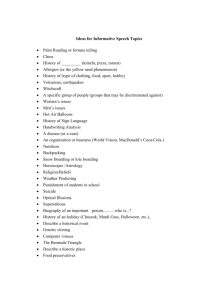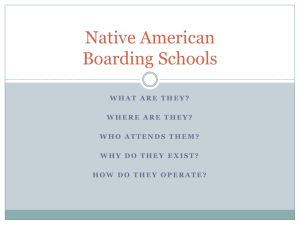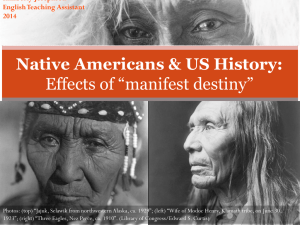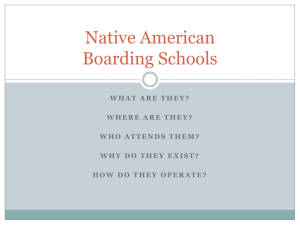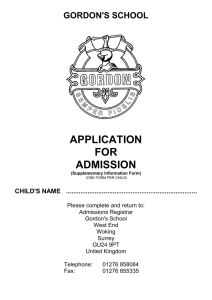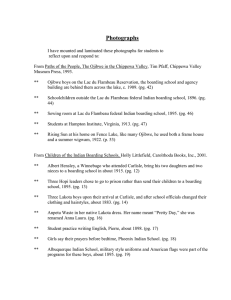Native American Boarding Schools
advertisement
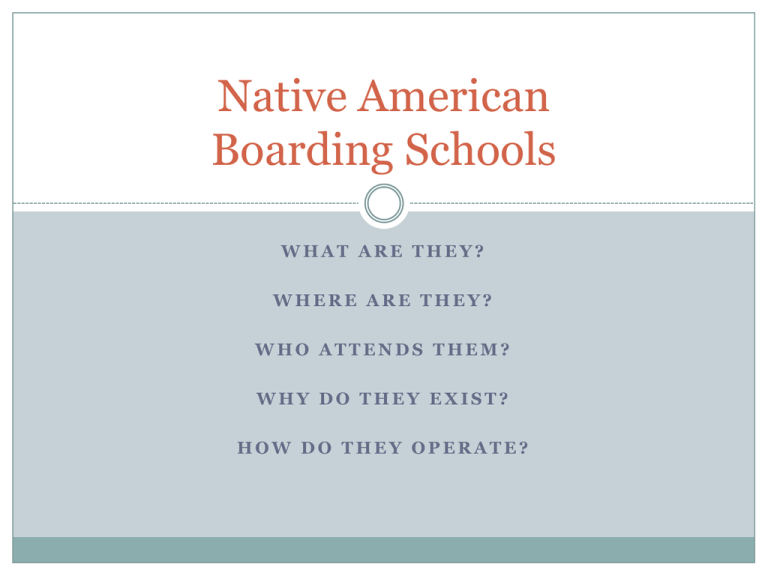
Native American Boarding Schools WHAT ARE THEY? WHERE ARE THEY? WHO ATTENDS THEM? WHY DO THEY EXIST? HOW DO THEY OPERATE? Native American History Prior to 1492, North America was home to over 100 Million Native inhabitants. The number has steadily declined for centuries since. Disease War Slavery Loss of Land, Ways of Life, and Culture The United States By 1790, the United States was growing rapidly. Government began to look to the West for more land and wealth. The Question for the U.S…. What is the future for the Native American? Should they be left alone? Should they become citizens of the U.S.? Do they have rights to own their Native land? The Solution United States government decides that Native Americans will be assimilated into white American culture. That is, Native Americans will adopt the ways of the white men in the States. How can this be done? Through Education. Meanwhile, as land is taken from the Native Americans, they are gradually moved onto Reservations. Reservations are small areas of land designated by the U.S. government for Native use and habitation. Assimilation by Education The Schools Adult Native Americans may not have wanted to adopt new ways of living. They already had their own culture! The U.S. government decided that they would start assimilation with the Native American children instead. If the children were sent to schools that the U.S. operated, they could be taught a new culture: the ways of the white man. By attending school, children left behind the lifestyle of their family and learned a new way of living. English Writing Math Farming Sewing, Laundry, Housework Why did the Indian needed to be assimilated? " A wild Indian requires a thousand acres to roam over, while an intelligent man will find a comfortable support for his family on a very small tract...Barbarism is costly, wasteful and extravagant. Intelligence promotes thrift and increases prosperity." (Adams, p.20) Manifest Destiny Culture was foreign to most white Americans Lived what some white Christians thought was a pagan life Assimilation through Education “Kill the Indian, save the man.” Lt. Richard Henry Pratt Indian children could not practice their culture Speaking their native tongue was forbidden Taught them a trade Required them to live with “proper” white families Regimented and structured life Tom Torlino (Navajo) as he appeared upon arrival to the Carlisle Indian School, October 21, 1882. Tom Torlino (Navajo) three years later The Boarding Schools Boarding School: A school where students are provided meals and a room to stay in. Three types of schools were constructed: Day School On-Reservation Boarding School Off-Reservation Boarding School Problems with staying on the Reservation Attendance. Parents kept their children home. Location. Children went home at night or on weekends and returned to their traditional ways. Boarding Schools Off-Reservation Boarding Schools are best The government decided that keeping students at school for extended periods away from their parents allowed the best assimilation. Students learned new ways of life: English Clothing Eating Trades, Skills School Subjects Native American students and white students were taught the same subjects! History, Science, Math, Band, etc. Boarding Schools Military Boot Camp? The schools employed rigid routines and dress requirements Corporal Punishment English Students were taught to leave their Native language behind They were forbidden to speak in any language except English Appearance Students had to leave their clothes behind and adopt white clothing Traditional hairstyles were cut, blankets taken away, animal hide shoes and clothes were replaced with cotton, wool, and leather. Life at an Indian Boarding School Cushman Indian School, Tacoma, Wash. February 1, 1912 Monday 5:45 A.M.-- Reveille. 5:55 to 6:10 -- Setting Up Exercise & Drill. 6:12 -- Air Beds. 6:12 to 6:45 -- Recreation. 6:45 -- First Call for Breakfast. 6:55 -- Assembly. Roll Call. 7:00 -- Breakfast. 7:30 to 7:35 -- Care of teeth. 7:35 to 7:40 -- Make beds. 7:40 to 7:55 -- Police Quarters. 7:55 -- Industrial Call. 8:00 -- Industrial work begins. School detail at liberty. The use of this period is at pupils' discretion. The more studious at books; those inclined to athletics make use of this time for practice. Some pupils practice music lessons, etc. 8:50 -- First School Call. Roll Call and Inspection. 9:00 -- School. 11:30 -- Recall. Pupils at liberty. 11:55 -- Assembly and Roll Call. 12:00 -- Dinner. 12:30 -- Recreation. 12:50 Source continued -- School and Industrial Call. Inspection. 1:00 P.M -- Industrial work and School. 3:30 -- School dismissed. School detail at liberty. Time spent in same general manner as morning detail utilizes period from 8:00 to 8:50. 4:30 -- Industrial recall. Drill and Gymnasium classes. 5:15 -- First Call. 5:25 -- Assembly. Roll Call. 5:30 -- Supper. 6:00 -- Care of teeth. 6:10 -- Recreation. 7:15 -- First Call. 7:25 -- Roll Call. Inspection. 7:30 -- Lecture. This period varies in length. Men prominent in education or civic affairs address the pupils. 8:15 -- Call to Quarters. Older pupils prepare lessons; intermediate children play. 8:45 -- Tattoo. Pupils retire. 8:55 -- Check. 9:00 -- Taps. Dramatic Change After a short time at a boarding school… Students were hardly recognizable to their parents Students learned new skills and trades Farming Carpentry Sewing Students put their new skills to work They were proud of their accomplishments Goals The government had sought to assimilate Native Americans by teaching them a new culture If Native Americans shed their identity, they could exist peacefully in the United States Were schools successful? Children returned home and could not use their new skills, language, or clothing. Many became frustrated; some returned to their old way of life Right and Wrong Did the Government do the right thing? Who benefitted from the schools? Were Boarding Schools the best plan? What were other options? Did the Government help or hinder Natives? What did the Government want? Land What did Native Americans want? Maintain their culture Consider This Where are Native Americans today? How do they live? Are they better off today than before the United States existed? Conclude What was the conflict between Native Americans the United States? Land, Culture What were the schools supposed to accomplish? Assimilate Native Americans into the United States What was the result? Decide the outcome with your groups
